解析:两种方法优化嵌入模型
什么是嵌入,为什么需要嵌入?
嵌入是机器学习任务中的一个重要工具,它能将复杂对象(文本、图像、音频)转换为数字向量。它们可以评估对象之间的相似性,这对推荐系统、搜索、异常检测和其他任务非常重要。


为什么需要优化嵌入
许多最先进的(SOTA)模型输出的向量表示维数为 1024,其中每个数字都以 float32 格式编码,这意味着每个维数需要 4 个字节。要在 2.5 亿个向量中进行搜索,我们需要大约 1TB 的内存!
Matryoshka Representation Learning(MRL)
我们需要的嵌入模型可以生成不同维度的向量,从 1024 维到 64 维不等。此外,这些向量还应该保留有意义的信息。
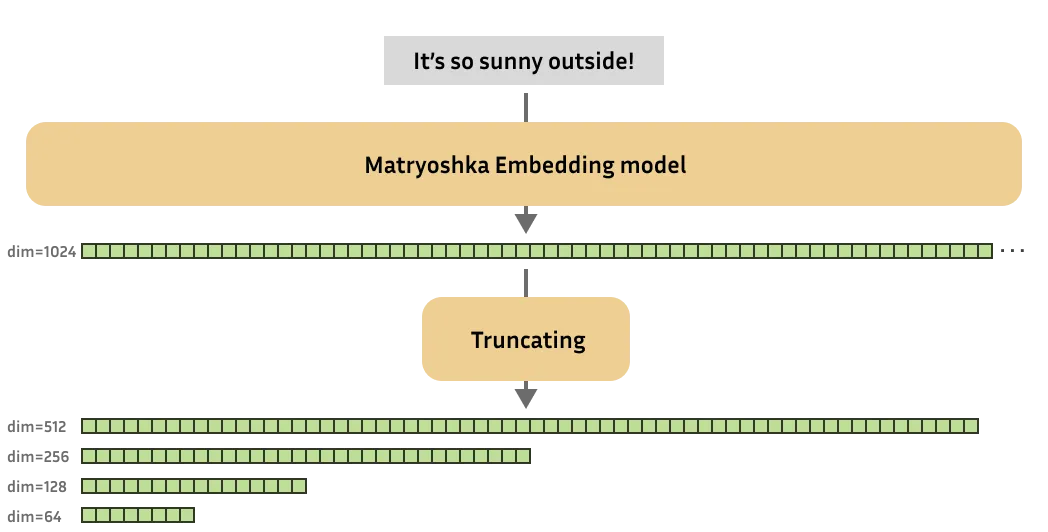
该论文的作者证明,可以对模型进行训练,将嵌入式中最重要的信息存储在向量的开头,这样我们就可以舍弃尾部信息,使用更有效的向量大小。
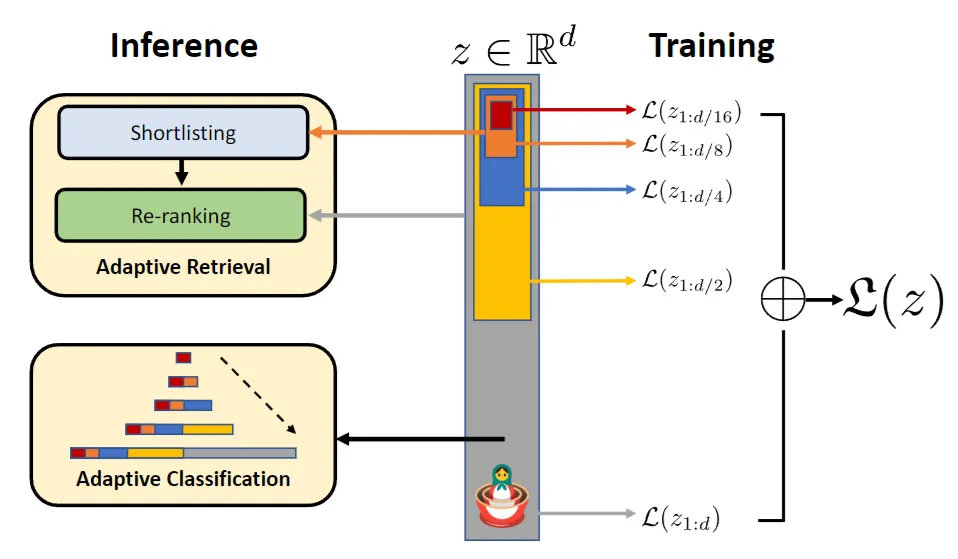
在训练过程中,我们不仅会对全尺寸嵌入进行损耗,还会对修剪过的部分进行损耗。就训练速度和内存而言,这并不会造成很大的开销。
例如,对于 nomic-ai/nomic-embed-text-v1.5,在将嵌入大小减小 3 倍的情况下,仍能保持 95.8% 的性能,而在减小 6 倍的情况下,则能保持 90% 的性能。
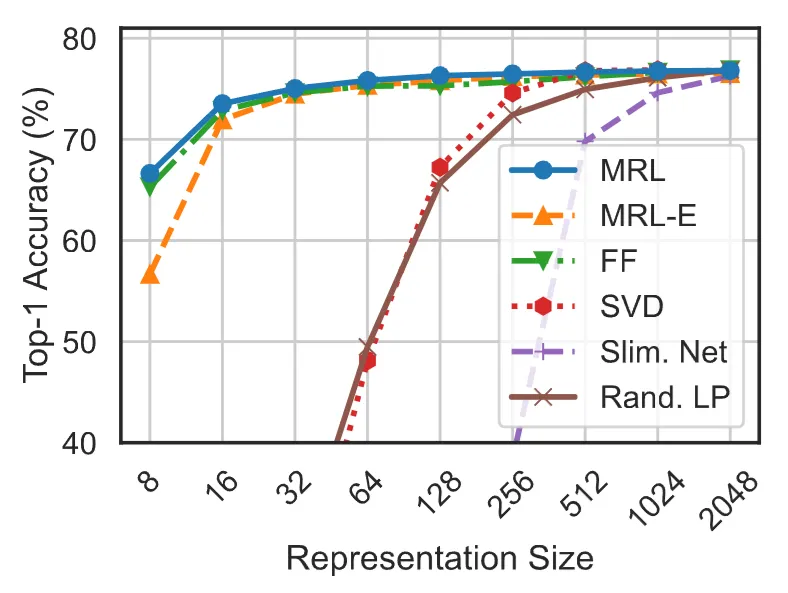
代码中的 MRL
训练:
from sentence_transformers import SentenceTransformer
from sentence_transformers.losses import CoSENTLoss, MatryoshkaLoss
model = SentenceTransformer("microsoft/mpnet-base")
base_loss = CoSENTLoss(model=model)
loss = MatryoshkaLoss(
model=model,
loss=base_loss,
matryoshka_dims=[768, 512, 256, 128, 64],
matryoshka_weight=[1, 1, 1, 1, 1],
)
model.fit(
train_objectives=[(train_dataset, loss)],
...,
)
使用:
from sentence_transformers import SentenceTransformer
from sentence_transformers.util import cos_sim
model = SentenceTransformer("tomaarsen/mpnet-base-nli-matryoshka")
matryoshka_dim = 64
embeddings = model.encode(
[
"The weather is so nice!",
"It's so sunny outside!",
"He drove to the stadium.",
]
)
embeddings = embeddings[..., :matryoshka_dim] # Shrink the embedding dimensions
print(embeddings.shape)
# => (3, 64)
# Similarity of the first sentence to the other two:
similarities = cos_sim(embeddings[0], embeddings[1:])
print(similarities)
# => tensor([[0.8910, 0.1337]])
二进制和标量嵌入量化
就优化而言,嵌入量化与 MRL 方法是正交的。我们不是削减嵌入,而是降低每个维度的精度,从而加快计算速度。
二进制量化
使用一个简单的阈值函数,将归一化嵌入中的每个数字映射为 0 或 1:
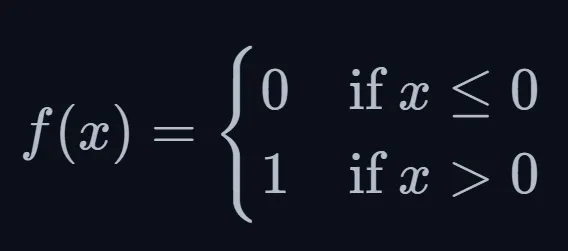
在计算相似性时,我们使用汉明距离,这是一种计算字符串中不同元素数量的有效方法。
这样,嵌入的每个维度都用一个比特来编码,但在实际工作中,我们使用的是字节,因此比特被编码成字节,如果原始嵌入的维度为 1024,那么 1024 比特就会减少到 128 字节。
许多矢量数据库(如 faiss)都支持二进制矢量。
标量量化
将嵌入数据从 float32 量化为 int8 的过程。
这包括将 float32 值的连续范围映射到 int8 值的离散集合,int8 可以表示 256 个不同的值(从 -128 到 127)。为此,我们使用了一个大型嵌入式校准数据集。我们计算这些嵌入的范围,即每个嵌入维度的最小值和最大值。由此,我们计算出每个值的分类步骤(桶)。
为了进一步提高检索性能,可以采用与二进制嵌入相同的校准步骤。值得注意的是,校准数据集对性能有很大影响,因为它定义了量化桶,所以最好有一个大型数据集。
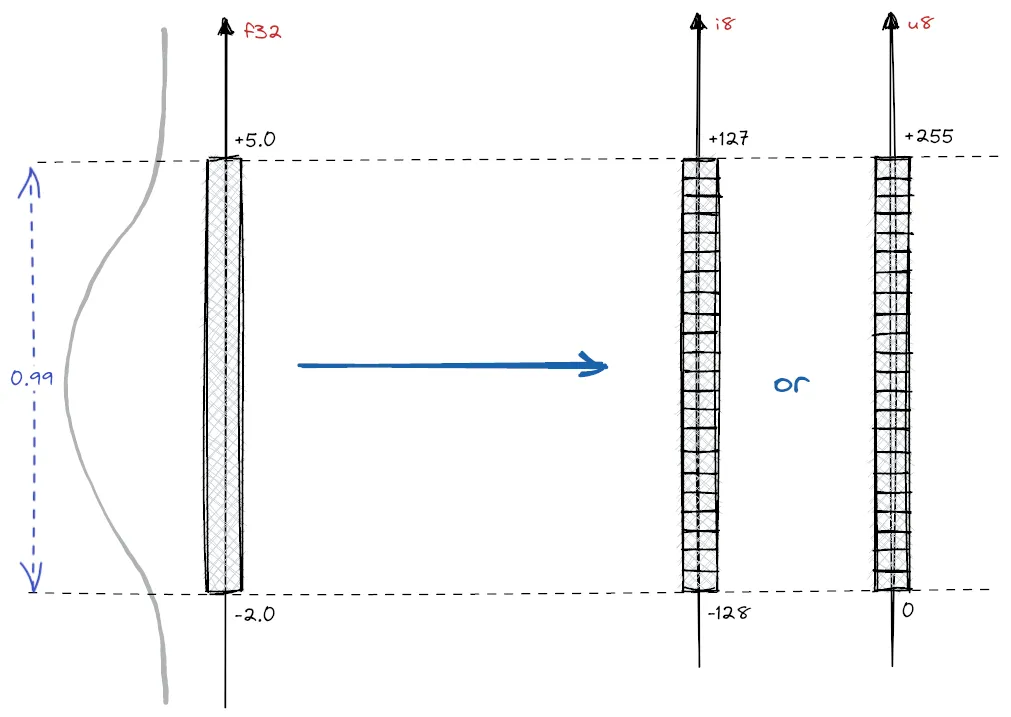
将大小为 1024 的嵌入量化为 uint8 或 int8 将产生 1024 个字节。
代码中的量化
二进制:
from sentence_transformers import SentenceTransformer
from sentence_transformers.quantization import quantize_embeddings
# 1. Load an embedding model
model = SentenceTransformer("mixedbread-ai/mxbai-embed-large-v1")
# 2b. or, encode some text without quantization & apply quantization afterwards
embeddings = model.encode(["I am driving to the lake.", "It is a beautiful day."])
binary_embeddings = quantize_embeddings(embeddings, precision="binary")
标量:
from sentence_transformers import SentenceTransformer
from sentence_transformers.quantization import quantize_embeddings
from datasets import load_dataset
# 1. Load an embedding model
model = SentenceTransformer("mixedbread-ai/mxbai-embed-large-v1")
# 2. Prepare an example calibration dataset
corpus = load_dataset("nq_open", split="train[:1000]")["question"]
calibration_embeddings = model.encode(corpus)
# 3. Encode some text without quantization & apply quantization afterwards
embeddings = model.encode(["I am driving to the lake.", "It is a beautiful day."])
int8_embeddings = quantize_embeddings(
embeddings,
precision="int8",
calibration_embeddings=calibration_embeddings,
)
你可以将二进制量化和标量量化结合起来,用二进制嵌入进行预过滤,然后用标量嵌入重新排序。































